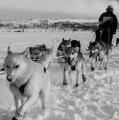100 Years Institute of Sports Science
















History of the IfS

Teaching & Research

Merchandising
Photos


© IfS 
© IfS 
© IfS 
© IfS 
© IfS 
© IfS 
© IfS 
© IfS 
© IfS 
© IfS 
© IfS 
© IfS 
© IfS 
© IfS 
© IfS 
© IfS 
© IfS 
© IfS 
© IfS 
© IfS 
© IfS 
© IfS 
© IfS 
© IfS 
© IfS 
© IfS 
© IfS 
© IfS 
© IfS 
© IfS 
© IfS 
© IfS 
© IfS 
© IfS 
© IfS 
© IfS 
© IfS 
© IfS 
© IfS 
© IfS 
© IfS 
© IfS 
© IfS 
© IfS 
© IfS 
© IfS 
© IfS 
© IfS 
© IfS 
© IfS 
© IfS 
© IfS 
© IfS 
© IfS 
© IfS 
© IfS 
© IfS 
© IfS 
© IfS 
© IfS 
© IfS 
© IfS 
© IfS 
© IfS 
© IfS 
© IfS 
© IfS 
© IfS 
© IfS 
© IfS 
© IfS 
© IfS 
© IfS 
© IfS 
© IfS 
© IfS 
© IfS 
© IfS 
© IfS 
© IfS 
© IfS 
© IfS 
© IfS 
© IfS 
© IfS 
© IfS 
© IfS 
© IfS 
© IfS 
© IfS 
© IfS 
© IfS 
© IfS 
© IfS 
© IfS 
© IfS 
© IfS 
© IfS 
© IfS 
© IfS 
© IfS 
© IfS 
© IfS 
© IfS


